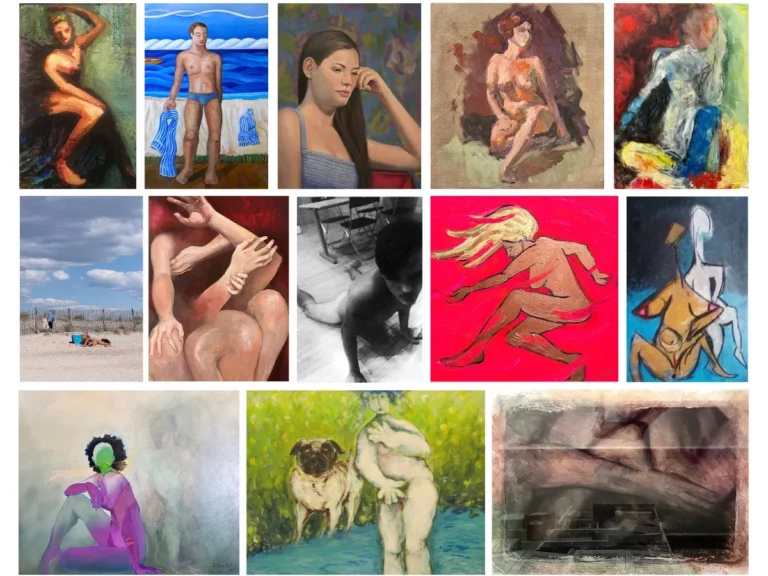The Kiss: Romantic Love Immortalized in Art, Inspired by Emotions

Romantic love has been celebrated by artists for centuries and there are few masterpieces as iconic and emotionally charged as “The Kiss” , timeless sculpture by Auguste Rodin or the painting by Gustav Klimt . Crafted with exquisite detail and imbued with profound emotion, this masterpieces have captivated audiences for over a century. Let us embark on a journey into the world of “The Kiss” and unravel the profound beauty and timeless symbolism behind these priceless works of art.
In unravelling the secrets of “The Kiss,” we embark on a journey into the depths of human emotion, exploring the complexities of love and the universal longing for connection.
The Kiss- a mastery of Rodin’s art, a tale of eternal love and tragedy
“The Kiss” originally depicted the ill-fated lovers Paolo and Francesca, characters inspired by Dante’s epic poem. Within the confines of Rodin’s sculpture, the essence of their story unfolds—a forbidden love that led to a tragic end. Caught in a passionate embrace, Paolo and Francesca were discovered by Francesca’s husband, who, consumed by rage, took their lives. Condemned to wander eternally through the depths of Hell, their embrace frozen in time serves as a poignant reminder of the power and consequences of forbidden love.
Auguste Rodin’s mastery of sculpting is evident in every curve and contour of “The Kiss.” With remarkable attention to detail, he captures the intensity of the lovers’ embrace, their bodies entwined in a moment of sheer vulnerability and raw emotion. The fluidity of their intertwined forms exudes sensuality and tenderness, evoking a sense of timeless passion that transcends the confines of the sculpture itself.
“The Kiss” garnered immediate attention and acclaim upon its completion. Its powerful depiction of love and desire challenged societal norms of the time, provoking both admiration and controversy. Rodin’s ability to capture the complexity of human emotions through his sculpting technique revolutionized the art world and solidified his reputation as a master of his craft.
Beyond its tragic narrative, “The Kiss” carries a universal symbolism that resonates with viewers across cultures and generations. It embodies the unbridled passion and connection shared between two souls, irrespective of societal constraints or the boundaries of time. The sculpture speaks to the eternal human desire for love, intimacy, and the longing for a connection that transcends the mortal realm.
The journey of “The Kiss”
“The Kiss” began its artistic journey as a commissioned piece by the French state in 1888. Following its completion, it joined the esteemed collections of the Musée du Luxembourg in 1901, where it continued to captivate visitors with its profound beauty. Eventually, in 1919, the sculpture found its permanent home in the Musée Rodin, where it stands as a testament to Rodin’s artistic prowess and the enduring power of love’s embrace.
Celebrated by generations of artists, The Kiss inspired many authors, scientists and historians to write about Rodin and the art of ancient Greece (British Museum) In a book that was shortlisted for the 2018 London Hellenic Prize, authors Celeste Farge, Bénédicte Garnier and Ian Jenkins take a fascinating look at how Classical sculpture inspired Rodin and his work:” Rodin drew energy and inspiration from the art of Classical antiquity, and he absorbed and assimilated the models of ancient Greek and Roman art in his own work in innovative ways. The Parthenon sculptures in particular were a great source of inspiration. He encountered them first in books, plaster casts in the École des Beaux-Arts in Paris and some originals in the Louvre, and then drew them first-hand on several visits to the British Museum.”

The Kiss-a legacy of passion and romantic love
Throughout the years, “The Kiss” has inspired countless artists, poets, and lovers alike. Its influence can be seen in various forms of artistic expression, from literature to cinema and beyond. It serves as a constant reminder of the profound impact that love and desire can have on our lives—a testament to the enduring power of human connection.
“The Kiss” by Auguste Rodin transcends its status as a mere sculpture, inviting us into a world where love, tragedy, and timeless passion intertwine. It speaks to our deepest desires, our longing for connection, and the transformative power of human emotions. As we gaze upon this extraordinary work of art, let us be reminded of the enduring legacy of love and the profound beauty that can be captured within a single kiss.

The Kiss by Gustav Klimt- a timeless legacy of love in harmony
The Kiss” by Gustav Klimt is a mesmerizing and enigmatic masterpiece that continues to captivate art enthusiasts worldwide. Created between 1907 and 1908 during the height of Klimt’s “Golden Phase,” this iconic painting showcases the artist’s unique style and explores themes of love, passion, and intimacy. As we delve into the secrets behind “The Kiss,” we uncover the artistic choices and symbolic elements that make it a timeless and cherished work of art.
We cannot discuss “The Kiss” without acknowledging Klimt’s signature use of gold leaf. The painting is adorned with intricate patterns and geometric shapes that shimmer with golden hues, imbuing the piece with an ethereal and otherworldly quality. The lavish application of gold leaf highlights the importance of love and elevates the intimate embrace of the two figures to a realm of divine significance.
“The Kiss” portrays a couple locked in an intimate and tender embrace. The figures, entwined amidst a field of flowers, exude a sense of unity and harmony. Their bodies, intricately intertwined, seem to blend seamlessly into one another, symbolizing the merging of souls in a moment of profound connection. Klimt’s portrayal of love transcends physicality and emphasizes the spiritual and emotional dimensions of human relationships.
Symbolism Unveiled
In “The Kiss,” Klimt incorporates symbolic elements that deepen the painting’s meaning. The couple stands upon a patch of lush flowers, representing the beauty and fertility of love. The woman’s flowing dress, adorned with intricate patterns, hints at the rich tapestry of emotions that accompany love and passion. The man, enveloped in a robe of geometric shapes, embodies a sense of protection and stability. These symbols interwoven throughout the painting invite viewers to contemplate the complexities and transformative power of love.
Controversial Interpretations
While “The Kiss” is widely regarded as a celebration of love and romance, it has also sparked debate regarding its underlying meanings. Some interpret the painting as an allegory of illicit love, as the couple is positioned outside the boundaries of traditional societal norms. Others perceive the painting as a representation of the eternal and all-encompassing nature of love, transcending societal constraints. Klimt’s intentional ambiguity invites viewers to explore their own interpretations and connect with the painting on a personal level.
Despite the figures in “The Kiss” being fully robed, the post-Victorian society of the early 1900s deemed it as pornographic, revealing the conservative sentiments of the time. Sold before completion , it caused public outcry, yet it was purchased by the Belvedere Museum of Vienna before Gustav Klimt had finished the painting.
“The Kiss” stands as a testament to Klimt’s artistic genius and his ability to capture the intricacies of human relationships. Its allure lies in its universality—a depiction of love that transcends time, culture, and personal experiences. This iconic painting continues to inspire contemporary artists, writers, and lovers, serving as a reminder of the profound and transformative power of love’s embrace.
“The Kiss” remains a cherished masterpiece, housed in the Österreichische Galerie Belvedere in Vienna, Austria. It stands as a symbol of Klimt’s artistic legacy and his profound understanding of the human condition. Visitors to the gallery are drawn to the painting’s mesmerizing beauty and the raw emotions it evokes, allowing them to connect with the timeless themes of love and intimacy that “The Kiss” embodies.
Through Klimt’s masterful brushstrokes and symbolic elements, this painting continues to evoke awe, spark contemplation, and remind us of the enduring power of love in our lives. Gustav Klimt’s “The Kiss” is not only a masterpiece but a piece of art history. From the controversies it sparked to its unique blend of artistic influences, this iconic painting holds numerous intriguing secrets. Its enduring presence in the Belvedere Museum serves as a testament to Klimt’s profound artistic vision and the universal appeal of love and connection that “The Kiss” embodies.
Do you want to share your story and inspire our readers ? Know that every story is paving the way for a brighter, happier future.






